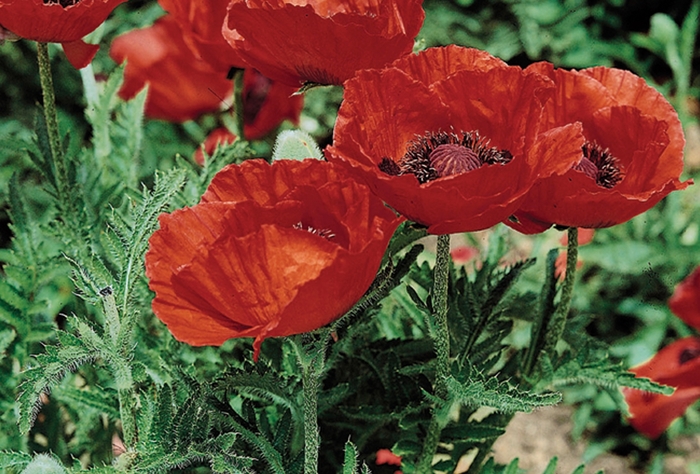« Previous Plant | Next Plant »
Papaver orientale
'Beauty of Livermere' Oriental Poppy
Deep, oxblood-red blooms are borne on wiry, pubescent stems from late spring through early summer. This is one of the finest reds available. Its petals have a crepe-like appearance and a satiny texture. Each flower can measure 4-6 across. In the center of a poppy's flower rests a very large, velvety-black seed capsule surrounded by prominent, dark purple stamens. Altogether, these flowers absolutely steal the show when they are in bloom. After the bloom cycle is completed however, these perennials will go dormant, so plan on planting other plants nearby to fill in the gaps.
- » Large, bowl-shaped, papery flowers
- » Colorful, long-blooming flowers
- » Thistle-like, hairy foliage
- » Freely self-seeds
- » Decorative acorn-like seeds pods
- » Use in the perennial borders
Poppies are popular and undemanding plants that have been grown for generations. When in bloom, they are the stars of the flower border, oozing vivid colors of every shade except blue. They will perform best in rich, well-drained soils in full sun. Plant divisions are best made in late summer or early fall. Poppies are prized cut flowers. They should be cut just when buds start to break and their ends should be seared to prevent sap leakage from their stems.
- Height
- 24 - 30 in
- Spread
- 20 - 24 in
- Zone
- 3-7
- Color
- Red
- Categories
- Perennial
- Tags
- Border or Bed; Cut Flower/Foliage; Dried Flower/Foliage; Ground Cover; Low Maintenance; Mass Planting
Check back soon for additional information on 'Beauty of Livermere' Oriental Poppy.
Poppies are popular and undemanding plants that have been grown for generations. When in bloom, they are the stars of the flower border, oozing vivid colors of every shade except blue. They will perform best in rich, well-drained soils in full sun. Plant divisions are best made in late summer or early fall. Poppies are prized cut flowers. They should be cut just when buds start to break and their ends should be seared to prevent sap leakage from their stems.
